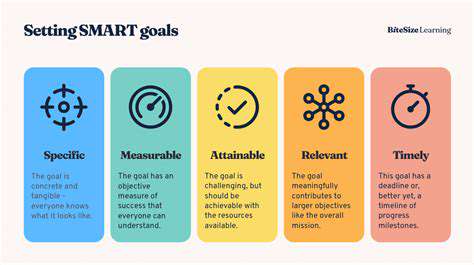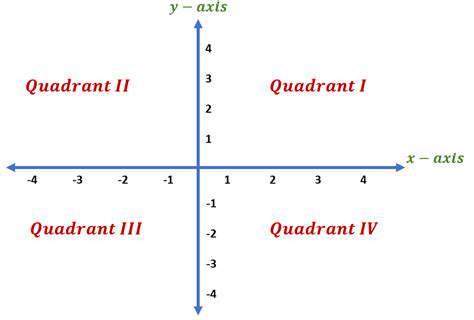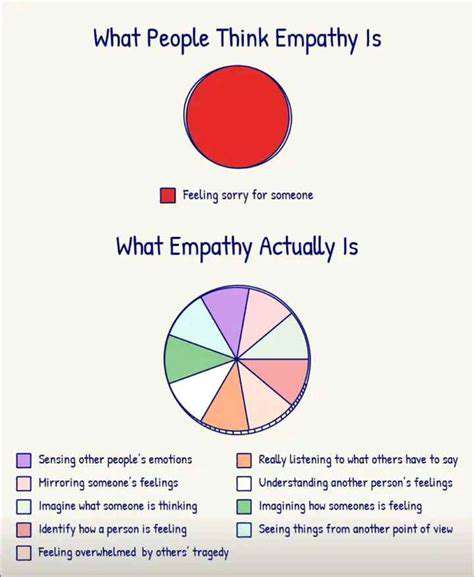SMART Goals Framework: A Comprehensive Guide for Effective Planning
What is the SMART Goals Framework?

Understanding the Components of SMART Goals
The SMART Goals framework is an effective tool for setting clear and attainable objectives. It stands for Specific, Measurable, Achievable, Relevant, and Time-bound. Each component plays a crucial role in ensuring that goals are not only clear but also attainable. This comprehensive approach aids individuals and organizations in creating actionable plans that drive success.
Specific goals are well-defined and unambiguous. In order to craft a specific goal, one must ask the who, what, where, when, and why about the objective. For example, instead of saying "I want to get fit," a specific goal would be "I want to run a 5k race in three months." This clarity is essential to maintaining focus and motivation.
The Measurable aspect of the SMART framework allows progress to be tracked. This means that you need metrics that quantify your progress, ensuring that you can assess if you are on track. For instance, measuring distance run or calories burned makes it easier to see improvements over time.
Achievable emphasizes setting realistic goals based on available resources and constraints. A goal that is too far out of reach can lead to frustration and discouragement. Ensuring that your goals are realistic means evaluating your current situation and capabilities, allowing you to aim for something challenging yet within reach.
Goals must also be Relevant, meaning they should align with your broader objectives and values. A relevant goal answers the "why" behind its worthiness. If your larger aim is career advancement, then enhancing specific skills or gaining certifications could be considered relevant goals that contribute to that overall objective.
Benefits of Using the SMART Goals Framework
Implementing the SMART Goals framework offers numerous advantages for both individuals and organizations. One of the primary benefits is increased clarity in goal-setting. When goals are clearly defined, individuals are less likely to drift off course and can concentrate on what matters most.
Another significant benefit is heightened accountability. When goals are specific and measurable, individuals can feel more accountable to themselves and others. This accountability fosters a commitment to the goal and encourages regular progress updates, which can lead to improved outcomes.
The framework also enhances motivation. Knowing exactly what to aim for and recognizing progress along the way can sustain motivation. Setting milestones within your SMART goals gives you achievable targets to celebrate, further driving you toward your larger objectives.
Using the SMART framework improves productivity as it eliminates distractions. With clearly defined goals, individuals can prioritize their tasks effectively and decrease time spent on unproductive activities. This focus on priorities leads to efficient time management and better results.
Finally, the SMART Goals framework facilitates better communication. When goals are articulated clearly, it opens lines of communication within teams and organizations, ensuring everyone is on the same page. This improved collaboration can lead to more significant synergy and innovation in achieving shared objectives.
Benefits of Using the SMART Goals Framework

1. Clarity and Focus
The SMART Goals framework promotes clarity by requiring individuals to define specific goals. This specificity helps eliminate vagueness and ensures that everyone understands what is expected. It aids in focusing efforts on what truly matters, contributing to enhanced productivity and motivation.
When goals are clear, it becomes easier to allocate resources effectively. Teams can better prioritize their tasks, ensuring that their actions align with the established objectives. This level of focus can also inspire collaboration as team members align around a shared vision.
Furthermore, well-defined goals foster accountability among team members. Clearly articulated expectations allow individuals to own their responsibilities, leading to a more committed workforce. The result is an environment that encourages both personal and team growth.
In summary, the clarity provided by the SMART framework serves to enhance operational efficiency and strengthens overall organizational goals.
2. Measurable Outcomes
One of the critical advantages of the SMART Goals framework is its emphasis on measurable outcomes. This aspect allows individuals and teams to track progress consistently, making it easier to identify areas for improvement. Measuring outcomes provides valuable insights that can guide decision-making.
By incorporating quantifiable criteria, participants can celebrate small victories along the way. These milestones serve as motivators that keep momentum alive and encourage continued efforts. Regular assessment of progress against these metrics can also help in adjusting approaches when necessary.
This measurable nature enhances transparency within a team or organization, as stakeholders can see exact performance levels. It also fosters a culture of continuous improvement, where feedback is not only accepted but welcomed as part of the growth process.
Ultimately, measurable outcomes provide clear indicators of success and enable individuals to work towards achieving their goals with confidence.
3. Achievable Goals
The SMART framework emphasizes the importance of setting achievable goals. It's essential that goals are realistic and attainable, as this prevents setting individuals or teams up for failure. By ensuring that goals are within reach, motivation and morale remain high.When goals are perceived as attainable, individuals are more likely to commit to them.
This achievable nature doesn't mean that goals shouldn't be challenging; instead, they should stretch capabilities without being out of reach. Establishing goals that inspire growth while remaining realistic leads to sustainable progress. It encourages individuals to push themselves just enough to foster skill development and confidence.
Moreover, integrating achievable goals into planning creates an environment where risks can be taken strategically. Individuals and teams can experiment with innovative approaches while knowing they are working within a framework that supports eventual success.
In essence, achievable goals cultivate resilience and determination, paving the way for future accomplishments.
4. Time-Bound Objectives
Time management is a crucial factor in any planning process, and the SMART framework incorporates time-bound objectives effectively. Establishing deadlines creates urgency and encourages individuals to stay on track. Setting specific timelines for goals enhances accountability, as everyone knows when to expect results.
Moreover, time-bound goals facilitate priority setting. With clear deadlines, individuals can better allocate their time and resources to ensure that they meet objectives efficiently. This focused approach to timing can significantly enhance productivity across teams.
Additionally, having a timeframe for goals encourages adaptability. When deadlines are approaching, individuals and teams are prompted to solve challenges that may arise, developing problem-solving skills in the process. It cultivates a proactive mindset that is essential for navigating dynamic work environments.
Ultimately, time-bound objectives drive progress and inspire commitment, reinforcing a culture of completion and achievement.
Implementing the SMART Goals Framework
Understanding Specificity in SMART Goals
Specificity is the cornerstone of the SMART goals framework. A specific goal clearly defines what needs to be accomplished, which eliminates ambiguity. Instead of stating a vague intention, such as "improve sales," a specific goal would be "increase online sales by 20% in the next quarter." This clarity creates a focused target.
When setting specific goals, it is essential to answer the who, what, where, when, and why of the target you are setting. By addressing these questions, you can ensure that the goals are well-rounded and clear to all stakeholders involved.
Additionally, specificity helps in identifying the resources required and the parties responsible for achieving the objective. This is crucial in large organizations where various teams may be involved in reaching the goal.
In summary, a specific goal is not only easy to understand but also becomes the guiding star for various planning sessions and operational activities that follow. Ensuring the goal is specific can greatly enhance focus and drive within a team.
Measuring Progress: Key Performance Indicators
Measuring progress is essential when implementing SMART goals, as it allows teams to track their advancements and make necessary adjustments. The 'Measurable' aspect of SMART emphasizes having quantifiable criteria to assess progress effectively.
To establish measurable goals, develop key performance indicators (KPIs) that align with your objectives. For example, if the goal is to enhance customer satisfaction, KPIs could include customer satisfaction scores, net promoter scores, or response times.
Regular check-ins and reviews of these metrics are vital. They provide insights into what is working and what needs improvement. This data-driven approach enables a proactive method to adjusting strategies toward achieving your goal.
Moreover, visualizing data through dashboards or regular reports can motivate team members. Seeing tangible evidence of their contributions reinforces commitment and can cultivate a sense of achievement within the team as they move closer to their goal.
Ensuring Achievability: Setting Realistic Goals
The 'Achievable' component of the SMART framework is about creating goals that are realistic and attainable. While it’s important to be ambitious, setting unattainable goals can lead to frustration and loss of motivation.
To determine the achievability of a goal, consider the current capabilities, resources, and constraints of your team or organization. It's beneficial to analyze previous performance data and current market conditions to create a realistic timeline and expectations.
Involving team members in the goal-setting process can also enhance the achievability of your goals. By gathering input from various perspectives, you can gain insights into what is feasible and align the goals with the team's skills and expertise.
Ultimately, achievable goals serve to challenge individuals while remaining within reach, fostering a growth mindset among team members. This balance is essential for maintaining enthusiasm and encouraging continuous improvement.
Time-Bound Goals: The Importance of Deadlines
Incorporating a timeline into your SMART goals is crucial. The 'Time-bound' element drives urgency and helps prioritize tasks, ensuring that goals are met within a specific timeframe. Without a deadline, there's a risk of complacency, leading to procrastination.
Setting clear deadlines not only provides a target date but also aids in backward planning. By determining the end date, teams can work backward to identify the necessary steps and milestones, allocating resources and time accordingly.
When deadlines are approached collaboratively, they can create accountability within the team. Everyone becomes responsible for their part of the timeline, which can enhance teamwork and collective responsibility towards meeting the goal.
Lastly, time-bound goals allow for periodic evaluations to track progress. If deadlines are missed, teams can analyze the causes and adjust their strategies, promoting a culture of continuous learning and adaptation. This focus on timelines ensures that goals are met efficiently and effectively.










